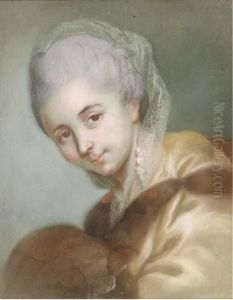Charles-Alexis Huin Paintings
Charles-Alexis Huin was a French artist born in 1735 in Saint-Quentin, France. Despite the limited available information about his early life and training, it is known that he was active during the 18th century, a period rich in artistic expression and characterized by the Rococo and early Neoclassical movements. Huin worked primarily as an engraver and is noted for his contributions to book illustrations, a common practice among engravers of his time.
Huin's works are characterized by their delicate lines and attention to detail, reflecting the Rococo taste for intricate and ornate designs. However, as the Rococo style gave way to Neoclassicism in the latter half of the 18th century, artists like Huin had to adapt to the changing tastes. This transition is sometimes evident in his later works, which may exhibit a cleaner, more classical line quality in accordance with the emerging Neoclassical aesthetic.
While Huin may not be as widely recognized as his contemporaries like François Boucher or Jean-Honoré Fragonard, his engravings still contributed to the visual culture of his time. They often depicted scenes from mythology, history, and literature, serving as both decoration and a means of disseminating these stories in an increasingly literate society.
Charles-Alexis Huin passed away in 1796. His works remain a testament to the artistic skills of engravers during the 18th century and provide valuable insight into the visual culture of the period. Like many artists of his day, Huin's legacy is preserved in the prints and books that continue to be studied by art historians and enjoyed by art enthusiasts.
